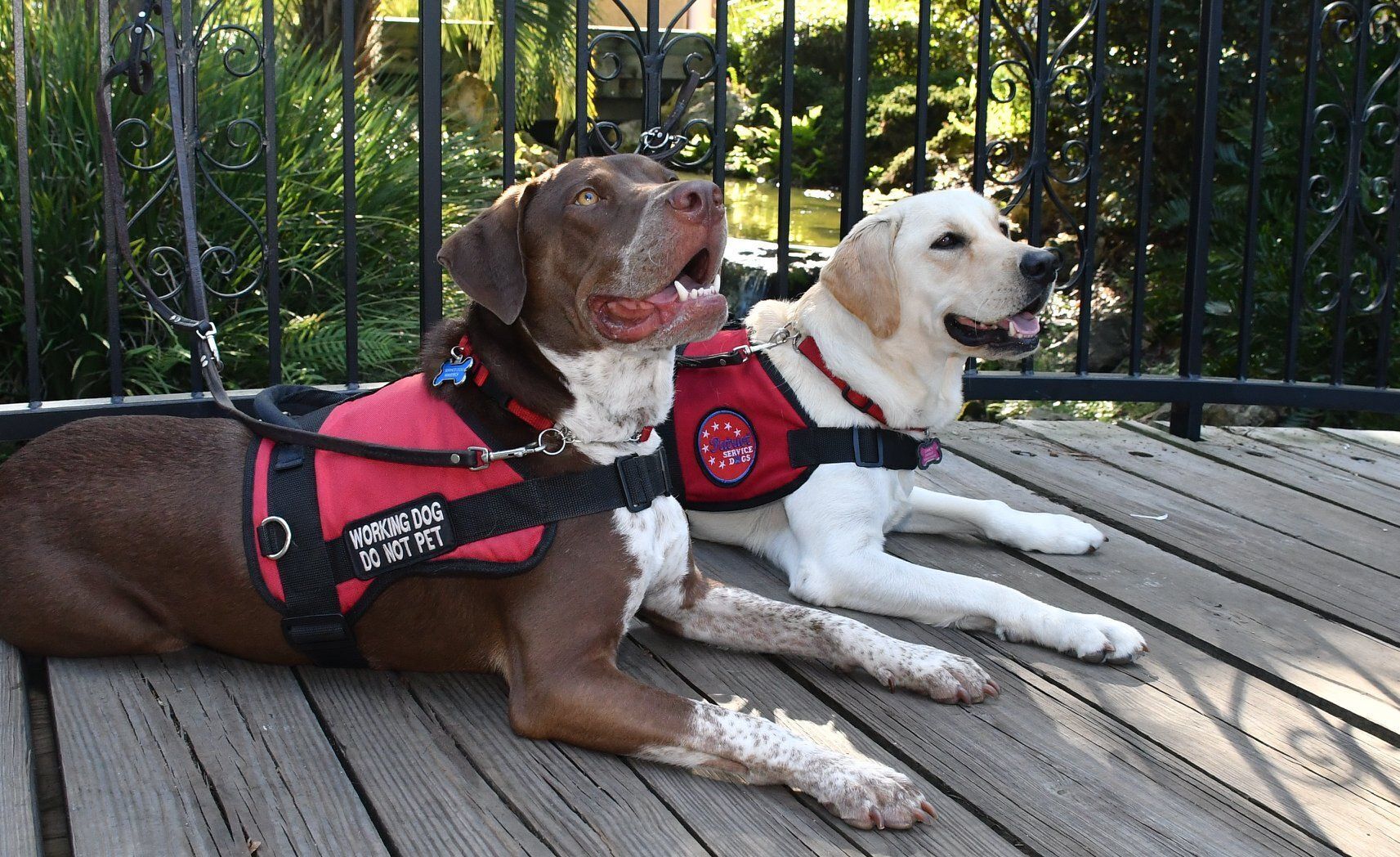
The general public has a lot of questions when it comes to service animals. In this week’s post we are answering some of those frequently asked questions. Read on if you're curious to learn more.
1. What is a service animal?
Service animals are defined by the Americans with Disabilities Act as, “dogs that are individually trained to do work or perform tasks for people with disabilities.”
2. What does do work and perform tasks actually mean?
Do work and perform tasks means that a service animal is trained to specifically mitigate symptoms of a specific disability. When you see a service dog out and about in public, they are working. It is their job to help their handler navigate life through their disability, and they preform specific tasks that they were trained to do in order to be of service to their handler.
For example:
- A diabetic alert dog is specifically trained to alert a person when their blood sugar level gets too high or too low.
- A psychiatric service dog is trained to remind someone to take their medication.
- A guide dog is trained to help someone navigate.
3. What is the difference between a service animal and emotional support animals (ESA) and/or a therapy dog?
There are two major differences between service animals, ESAs, and therapy animals:
- Service animals are trained to perform work and tasks that mitigate the symptoms of a disability, while ESA and therapy animals provide comfort simply by being a companion.
- Service animals are protected by the ADA, while ESA’s and therapy dogs are not protected under the ADA.
4. What are service animals trained to do?
Service animals are trained to mitigate symptoms of the person with a disability and the list is long and impressive. A few examples of the types of service dogs include, psychiatric service animal work (PTSD), guide dogs, diabetic alert dogs, seizures dogs, and mobility assistance dogs.
5. Do service animals need to be professionally trained?
No. Despite popular belief, service dogs do not need to be professionally trained. According to the ADA, the dog handler holds the right to train his/her own service animal. However, service animals are required to be trained to mitigate the symptoms of their owner’s disability.
6. Do service animals have to be registered?
No. There has been a rise in online service dog registration or certificate services. Most of these online registries promise that your dog will be “registered” in some kind of database. This is not required by the Americans with Disabilities Act and the Department of Justice does not recognize them as proof that a service dog is a service animal.
7. Do service animals need to wear identifying garments?
No. Service animals are not required by the ADA to wear identifying garments such as vests, leashes, collars, or patches that identify them as a service animal. Anybody can put a service vest on their pet, but it does not mean that their animal is a service animal.
8. Can hotels or other establishments require an extra fee for a person with a service animal?
No. This is not legal and is in direct violation of the ADA.
9. Are there limitations of where a service animal can go?
A person with a disability who has a service animal reserves the right to take their service animals into public places, including, but not limited to: transportation, restaurants, motels/hotels, etc.
Although service animals are allowed in public places, there are a few exceptions. These exceptions include: operating rooms, restaurant kitchens, and places of worship such as churches and synagogues.
10. Can someone ask for a service animal to be removed?
There are some conditions that would allow a person/organization to have a service animal removed from a public establishment. For example, if a service animal is genuinely disrupting a business, poses a health or safety threat to the public, is being aggressive, or is not house trained.
It is important to remember that there are certain behaviors or actions that a service animal makes that is a part of their job. For example, a bark might be the signal to the handler, not a disruption.
Final Thoughts
Service animals are a true blessing to the people that need them, but unfortunately there is a lot of confusion and misinformation about service animals and the laws that protect them. We hope we cleared up any questions and/or concerns that the public may have about service dogs.
Help save lives and donate to our cause!
New Life K9s places service dogs with veterans and first responders with PTSD at no cost to the veterans and first responders.

